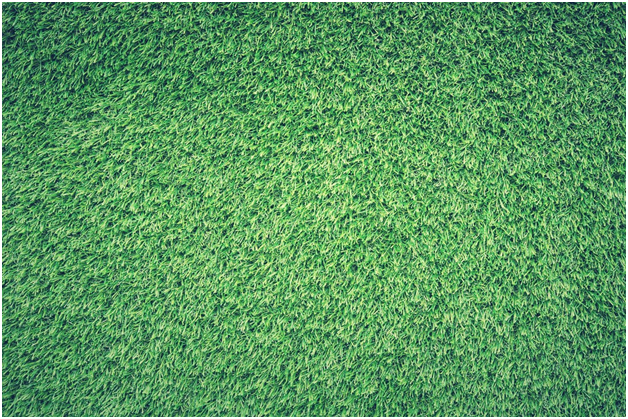A healthy soil is the one that lets the air, nutrients, and water penetrate down to the roots of the plants and grass. If the circulation of these vital elements is disrupted, the entire ecosystem will eventually collapse. Definitely, you don’t want this to happen in your own yard. Proper and timely aeration is the key to solving the problem. In this article, we answer the question “what is the benefit of aerating your lawn” in detail and provide a quick guide on how to aerate your lawn to avoid any negative consequences.
| What does lawn aeration do: quick facts
Benefits of aerating lawn include better circulation of water, air, and nutrients in the soil. An aerated lawn receives all these elements in the right quantities and without delays, which lets it thrive all around your yard. Besides, lawn aeration improves the effects of fertilization. Here are the tell-tale signs that your lawn is in dire need of aeration: Dry, hard soil Slow drainage (which usually shows up as puddling) Thin or dead patches Yellow or brown grass Weeds Slow growth Thatch |
Lawn Aeration Guide
Below is a detailed guide on how to aerate your lawn and the description of the benefits of this procedure.
What is the benefit of aerating your lawn
Here is the full list of lawn aeration benefits:
Nutrient availability improvement – aerated soil lets water, nutrients, and air penetrate deeper into the soil and reach the turf easier, making it a lot healthier.
Applying fertilizer usually gets the job done. The best ones provide your soil with the right cocktail of nutrients to jumpstart grass growth, keep plants healthy, improve drainage, and even curb certain types of weeds and diseases.
It’s crucial not just to dump any big-name fertilizer on your lawn, though. There are many factors to consider, including the soil quality, the type of grass and plants you have, the climate, and the product’s specific formulation.
One thing many homeowners miss is timing. Especially in temperate climates, the timeframe when you put the fertilizer matters.
For example, to know when to fertilize bermuda grass in NC, you should check the prevailing climate. If it’s early spring, the grass will need much nitrogen to jump off the post-winter slump in growth. Late fall calls for a more balanced formulation to prep the soil and plants before the first frost sets in.
Meanwhile, lawns in places like Florida need a lot of regular fertilizing as the heat can quickly sap plants of nutritional content.
Soil pH stabilization – using a lawn core aerator you can add sulfur or lime deeper into the soil to modify pH to the needed levels.
Easier thatch management – thatch can build up on the lawn and rob it of moisture and nutrients. Core aeration can speed up thatch decomposition by introducing microorganisms from lower soil levels.
Soil compaction relief – compacted soil is the biggest enemy of every lawn as it leads to thinning grass and even dead spots. Aeration solves this problem easily.
Grass growth stimulation – well-aerated turf is the best environment for thriving thick grass.
Reduced puddling – if the water puddles on your lawn, aerating will de-compact soil and improve water drainage.
How to aerate lawn
Planning turf aeration, you need to start by reviewing different lawn aerators to find the best tool for your specific situation. Once you get the tool, follow these steps:
Mow – successful procedure requires you to mow the lawn short and mark all the sprinkler heads and fencing not to damage them with the aerator.
Water – moist soil is easier to aerate. Water the lawn one day before the procedure or wait 24 hours after rain.
Aerate – use your tool to aerate all patches of turf that need it. You can make multiple passes over heavily compacted patches.
Reseed – now that the turf is aerated, you can reseed those thinning areas.
Maintain – once the aeration is done, maintain the yard with due diligence to postpone any issues as much as possible.
FAQ
Here are 3 more important facts to learn on the purpose of aerating lawn and the specifics of the process.
When should I aerate my lawn?
For the best results, you have to wait for the peak growing period of the lawn grass. This way, you will ensure that the grass recovers quickly after the aerator impact. Cool-season grasses require early-spring aeration, while warm-season varieties need it in late spring or early summer.
Is aerating the lawn worth it?
While the benefits of the procedure have been listed above, not all lawns actually lack aeration. This procedure is required for heavy-traffic and heavy-soil lawns. Besides, it will help turfs with excessive thatch on them.
What do you do after you aerate your lawn?
Here’s what to do right after aeration:
Out soil plugs into the holes left by the aerator;
Fertilize the lawn immediately for the best results;
Reseed thinning and dead spots to establish healthy even turf.
Reviving Breath
If your turf could speak, it would thank you for providing it with all it needs through aerating the soil timely and properly. You can perform the procedure yourself or hire a professional gardener just once a year to get it done while you are busy working. Did our article answer all your questions about lawn aerating and its benefits? You are welcome to ask us questions and offer actionable tips in the comments below.









